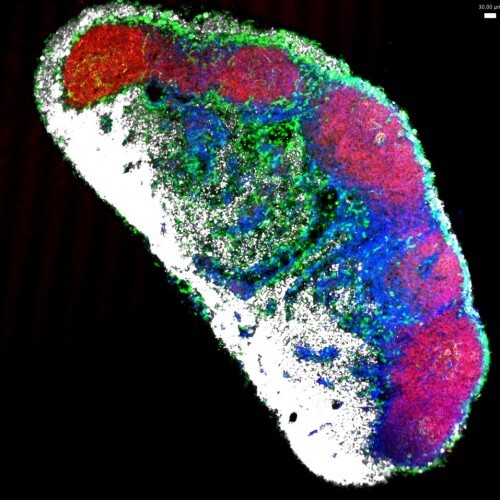In a study led by Dr. Naama Geva-Zatorsky, who is currently in post-doctoral training at Harvard University, the mechanism of communication between the good bacteria and the immune system is revealed

In the last decade, there has been a lot of talk about the friendly bacteria - probiotics - which, unlike what was known about bacteria in the past, are not only harmless to humans, but also help us by strengthening our immune system. Although bacteria, friendly and harmful, are found everywhere in our body, they are mainly concentrated in the intestines. The high concentration of harmful bacteria increases the risk of disease, while the high concentration of friendly bacteria helps the immune system fight disease. In light of this, researchers are trying to understand how the immune system knows how to recognize who are friendly bacteria and avoid attacking them, or in other words how does a friendly bacteria residing in the intestines 'offer friendship' to the immune system?
In the study, published on August 17 in the important journal Nature Medicine, researchers managed to overcome an obstacle that has prevented us until now from identifying the ways of communication between the intestinal bacteria and the immune system. "One of the obstacles in scientific research, since the friendly bacteria were identified and the term probiotics was coined, was to mark the bacteria in a way that would allow us to track them inside the body. Such monitoring can help in understanding the ways of communication of bacteria with different organs in the body, and especially with the immune system. In addition, tracking the bacteria makes it possible to learn about the power relations between different species of bacteria - harmful and friendly," explains Dr. Naama Geva-Zatorski, the Israeli researcher who led the study conducted at the prestigious Harvard University.
Dr. Geva-Zatorsky, who carried out the research as part of her post-doctoral work in the laboratory of Professor Dennis Kasper, a world expert in microbiology, clarifies that the method they developed makes it possible to characterize the cells of the immune system, which play a central role in transmitting signals from bacteria to the human body. These signals are important, as they can activate the immune system when we need it.
"Basically, we developed a new method of metabolic labeling," explains Dr. Geva-Zatorsky of their research innovation. "We feed the bacteria with sugar that undergoes a small chemical change that causes fluorescent radiation of a certain color. A bacterium that has eaten 'our' sugar will emit the fluorescent dye; Even after it infiltrated the bodies of mice. This marking allowed us to track a certain molecule in an important friendly bacterium called Bacteroides fragilis, and thus understand how this bacterium communicates with the immune system." The researchers chose to focus on this molecule because its activation in mice with colitis (severe intestinal inflammation characterized by high fever, bloody diarrhea, severe abdominal pain, abdominal swelling) led to relief of the mouse's symptoms and even to his recovery.
The findings are a significant breakthrough because this supposedly simple method makes it possible to understand the recovery process. The goal is to develop a drug that will not only focus on a certain type of bacteria, but will also be targeted at different stages of the disease (different treatments for early detection versus a full outbreak). Dr. Geva-Zatorski hopes that in the future it will be possible to learn from the bacteria and their communication with the body how to cure diseases according to the wisdom of nature (the wisdom of the bacteria) - "When we know what the ways of communication are between the friendly bacteria with which we live peacefully when we are healthy, we will be able to locate the communication problems in disease states chronic and fix it in the language of the bacteria".
Dr. Michal Arad, Department of Biochemistry and Molecular Biology, University of Maryland. Voluntarily manages social networking activities at the Biobrod association
More of the topic in Hayadan:
Groundbreaking research reveals what we look like to bacteria
